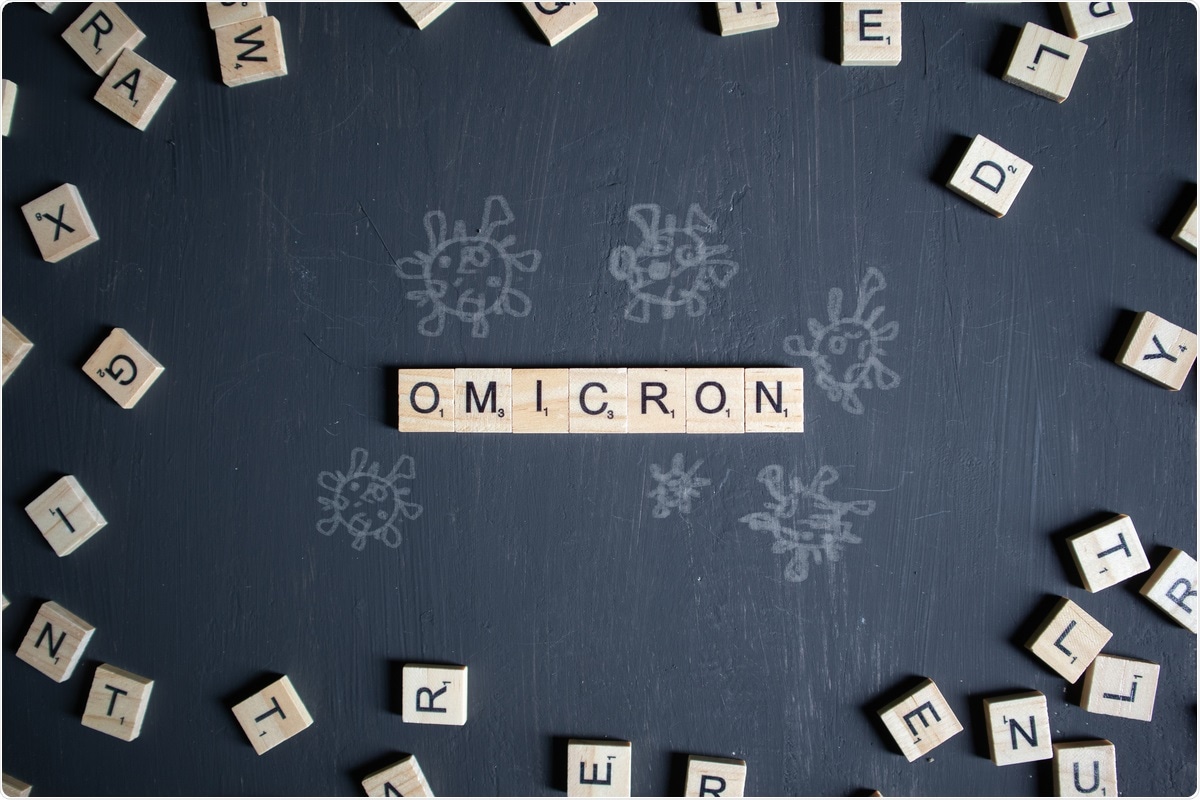Study finds mutational changes in Omicron variant likely increase transmissibility

The sequence of the latest severe acute respiratory syndrome coronavirus 2 (SARS-CoV-2) variant of concern (VOC) – the B.1.1.529 Omicron variant – that emerged in Southern Africa was announced on November 24th, 2021.
The Omicron variant has over 30 mutations – including substitutions, deletions, and an insertion in the Spike protein – which is higher than the mutations in any previously reported variant. In comparison, the previous VOCs such as Alpha, Beta, Gamma, and Delta had 9, 10, 12, and 10 mutations, respectively.
 Study: Receptor binding and escape from Beta antibody responses drive Omicron-B.1.1.529 evolution. Image Credit: haidaralf/Shutterstock
Study: Receptor binding and escape from Beta antibody responses drive Omicron-B.1.1.529 evolution. Image Credit: haidaralf/Shutterstock
While the N-terminal domain (NTD), receptor-binding domain (RBD), and the furin cleavage site region are the hotspots for all mutations, within the RBD, mutations are concentrated around the angiotensin-converting enzyme 2 (ACE2). The Omicron mutations include ones that have been previously shown to contribute high-affinity binding to ACE2, such as the Q498R and N501Y mutations that are critical for the formation of additional virus-host interactions. Increased charge complementarity between the viral RBD and host ACE2 substantially increases their affinity and thus transmissibility via increased syncytia formation; additional mutations to the virus encourage immune evasion.
The study
A study published in the pre-print server bioRxiv* investigated the various factors contributing to the high mutation load and possible high infectivity of the Omicron variant. The researchers used a large panel of structures (n=29) from potent monoclonal antibodies (mAbs) generated against the early Wuhan-related strains (n=13) along with new structures (n=16) of mAbs generated against the Beta variant to investigate their ability to neutralize Omicron.
The authors propose that the numerous mutations in the Omicron RBD were generated to help escape the immune response by compromising or knocking out the binding of the most potent mAbs. The mutation cluster in the Omicron RBD is a second source for higher infectiousness as it helps in tighter ACE2 binding. Additionally, the Q498R mutation is unique to the Omicron variant and confers high-affinity binding.
Results
The observations showed that the higher affinity ACE2 binders do not affect infection because the S1 subunit is removed before the S2 subunit executes membrane fusion. The researchers also show that while RBD-62 has a higher affinity than the neutralizing mAbs, the neutralizing activity of mAbs that still bind to RBD-62 is not affected, possibly due to the mAb’s slow off rate.
Multiple mutations at the receptor binding site, proximal to N343 glycan, and NTD in the Omicron variant likely indicate a driver of immune evasion essential for their evolution. In their modeling, the authors show that almost all potent mAbs contact mutated residues, more so in the case of Beta mAbs, which suggests that the Omicron variant may have emerged to escape the Beta mAbs.
Also, the unusual change to Ala 484 can be explained as an escape from the 484K responses to the Beta variant. Thus, it is likely that the Omicron variant evolved in a location where sequencing surveillance was absent, even with rampant Beta variant seroconversion. These changes in interactions caused by the mutations are so severe for many antibodies that their activity will likely be severely impaired or even completely lost; this also applies to the mAbs developed for clinical use.
Conclusion
Although it is still not known if the Omicron variant will spread globally or whether it will be a non-dominant strain outside Africa like the Beta variant, scientists believe that if it does spread rapidly, it will likely be more transmissible and will lead to a significant reduction in the neutralizing capacity of naturally infected and vaccinated serum, due to the increased affinity of Omicron RBD for ACE2.
According to the authors, while more urgent research will follow that will determine these parameters, the neutralizing capacity will be retained to an extent in sera with high antibody titers. Thus, while the Omicron mutation will likely compromise the mAb binding, some residual binding should still be able to offer protection from severe disease and hospitalization.
To summarize, the study presented evidence for a large number of mutational changes in the Omicron variant which will likely increase its transmissibility and significantly decrease the neutralization capacity of mAbs leading to a decline in vaccine efficacy.
Widespread vaccine breakthrough may mandate the production of a vaccine tailored to Omicron and failure of monoclonal antibodies may likewise lead to the generation of second-generation mAbs targeting Omicron.”
*Important notice
bioRxiv publishes preliminary scientific reports that are not peer-reviewed and, therefore, should not be regarded as conclusive, guide clinical practice/health-related behavior, or treated as established information.
- Jiří Zahradník, Aekkachai Tuekprakhon, Helen M. Ginn, et al. (2021). Receptor binding and escape from Beta antibody responses drive Omicron-B.1.1.529 evolution. bioRxiv. doi: https://doi.org/10.1101/2021.12.03.471045 https://www.biorxiv.org/content/10.1101/2021.12.03.471045v1
Posted in: Medical Science News | Medical Research News | Disease/Infection News
Tags: ACE2, Antibodies, Antibody, Coronavirus Disease COVID-19, Efficacy, Evolution, Glycan, Immune Response, Membrane, Mutation, Protein, Receptor, Research, SARS, Spike Protein, Vaccine, Virus

Written by
Susha Cheriyedath
Susha has a Bachelor of Science (B.Sc.) degree in Chemistry and Master of Science (M.Sc) degree in Biochemistry from the University of Calicut, India. She always had a keen interest in medical and health science. As part of her masters degree, she specialized in Biochemistry, with an emphasis on Microbiology, Physiology, Biotechnology, and Nutrition. In her spare time, she loves to cook up a storm in the kitchen with her super-messy baking experiments.
Source: Read Full Article